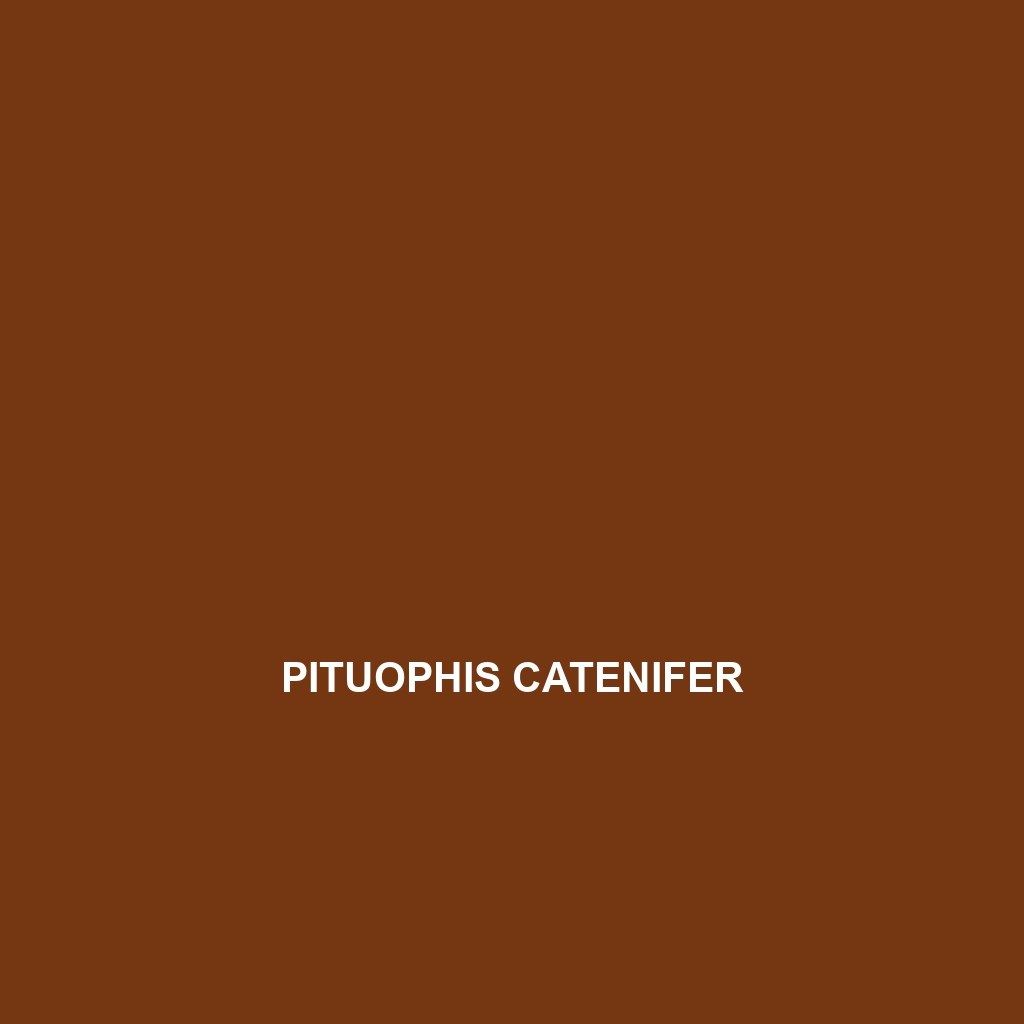Common Name
Pituophis catenifer
Scientific Name
Pituophis catenifer
Habitat
The Pituophis catenifer, commonly known as the gopher snake, primarily inhabits a diverse range of environments across North America, particularly in the United States and parts of Canada and Mexico. This species is often found in grasslands, savannas, scrublands, and deserts. Gopher snakes thrive in areas with sandy or loose soil where they can burrow easily. They prefer environments that receive ample sunlight and have a sparse canopy for better thermoregulation. Climate-wise, their habitats can vary significantly from temperate to arid regions, highlighting their adaptive nature. This adaptability allows them to occupy areas from dry desert regions to the edges of forest ecosystems.
Physical Characteristics
Pituophis catenifer is notable for its robust, elongated body, which typically ranges from 3 to 7 feet in length. Their distinctive coloration varies but often features a base color of yellow, cream, or light brown adorned with darker blotches or patterning that provides excellent camouflage within their natural habitats. The patterns can also be a mix of dark brown or black, contributing to their ability to blend into the environment. A key characteristic of gopher snakes is their pointed snout, used for digging and burrowing. They have a muscular build, allowing them to be effective ambush predators while also providing them endurance during longer movements.
Behavior
The behavior of Pituophis catenifer is highly adaptable, which aids their survival in various environments. These snakes are primarily diurnal, meaning they are active during the day. They exhibit interesting behaviors, especially during mating season, when males compete for the attention of females through displays of strength. Gopher snakes are also known for their characteristic defensive behavior; when threatened, they can mimic the rattling sound of a rattlesnake by vibrating their tails against the ground or by hissing loudly. This mimicry serves as an effective deterrent against potential predators.
Diet
Pituophis catenifer is primarily a carnivore, with a diet that includes a variety of prey such as rodents, birds, and lizards. They have been observed preying on small mammals like gophers, which is where they derive their common name. Their feeding habits consist of ambushing prey, using their keen sense of smell to detect movement and scents in their environment. Gopher snakes constrict their prey before consumption, ensuring a quick and efficient kill. Their dietary flexibility allows them to thrive in various habitats where prey is abundant.
Reproduction
The reproductive cycle of Pituophis catenifer typically occurs during the spring months. Mating often begins as temperatures rise, and males search for females using pheromones. After mating, the female lays a clutch of eggs, usually ranging from 2 to 24, depending on her size and health. The eggs are deposited in a warm, moist environment, like rotting vegetation, which provides the necessary heat for the incubation process. The gestation period lasts about 60 to 70 days, after which hatchlings emerge at around 12 to 15 inches long. Parental care in gopher snakes is minimal; once hatched, the young are independent and must fend for themselves.
Conservation Status
According to the International Union for Conservation of Nature (IUCN), Pituophis catenifer is currently listed as Least Concern. However, certain local populations face habitat destruction due to urban expansion, agricultural practices, and human encroachment. Conservation efforts are vital in protecting their habitats and ensuring that these snakes continue to thrive. Awareness and education regarding ecological balance are also essential in mitigating risks posed by habitat loss.
Interesting Facts
One fascinating aspect of Pituophis catenifer is their ability to adapt to different environments, which contributes to their widespread distribution. They are also highly effective in controlling rodent populations, playing a crucial role in their ecosystems. Interestingly, these snakes have a unique defense mechanism; when threatened, they can flatten their bodies to appear larger and hiss loudly to deter predators. Their striking coloration serves not just for camouflage but also as a warning signal to potential threats.
Role in Ecosystem
Pituophis catenifer plays a vital ecological role as both a predator and prey species. They help control rodent populations, thus contributing to the health of their ecosystems. By preying on small mammals, they keep these populations in check, which can prevent overgrazing of vegetation. Furthermore, as a food source for larger predators such as birds of prey or larger snakes, gopher snakes are integral to the food web. The presence of healthy gopher snake populations indicates a balanced and functioning ecosystem.
